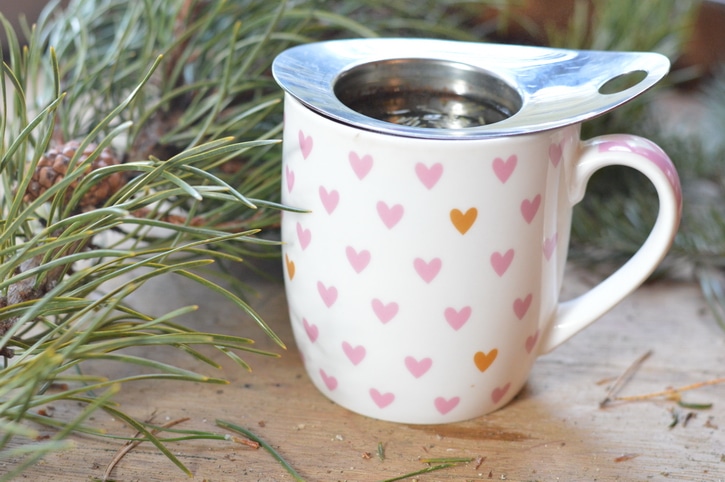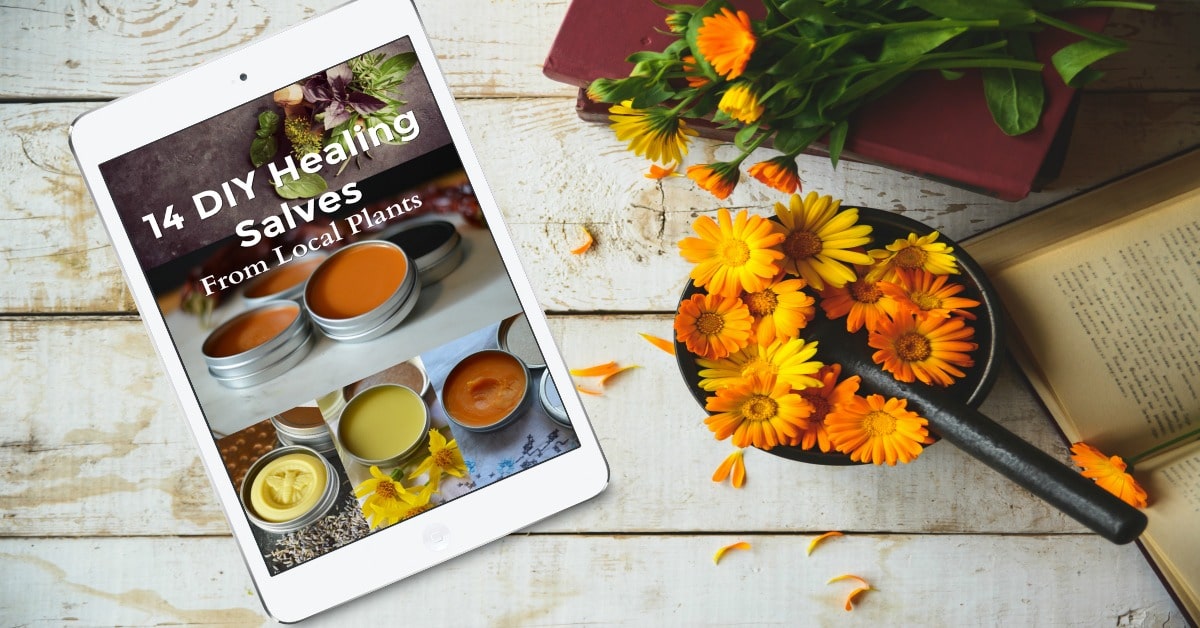Pine trees have so many uses. The needles, the sap, the roots are all beneficial for medicines, livestock and nutritional purposes. Are you fully utilizing their bounty for healing and home comfort?
You probably have pine trees growing on your homestead. There are 34 pine trees or shrubs native to North America, with 9 of them native to Canada. Pine trees commonly grow near spruce, fir, cottonwood, aspen, and alder trees. If you don’t have pine growing near you, spruce has some of the same medicinal qualities, although the needles of the spruce are stiffer and shorter. Shake hands with the tree. If the needles don’t give under the pressure of your hand but prick you instead, you are touching a spruce tree. Pine needles will lie down in your palm, without pricking you.
Pine has several medicinal actions:
- Antiseptic
- Anti-infectious
- Antifungal
- Antidiabetic
- Neuro tonic
- Decongestant of the lymphatic system
- Parasiticide
- anti-catarrhal
- stimulant
- tonic
The flowers, needles, twigs, and pitch are all used medicinally.
The pine may be used in cases of bronchitis, sinuitis, or upper respiratory catarrh, [cough], both as an inhalant and internally. It may also be helpful in asthma. The stimulating action gives the herb a role in the internal treatment of rheumatism and arthritis. There is a tradition of adding a preparation of the twigs to bath water to ease fatique, nervous debility, and sleeplessness, as well as aiding the healing of cuts and soothing skin irritations. (The Complete Illustrated Holistic Herbal by David Hoffman, p. 124)

Ponderosa Pine Tree overlooking Osoyoos, BC
Pine Tincture
Take pine twigs in the Spring as the flowers are opening. Both male and female flowers will appear on the same branch. Take a 6-inch piece of the branch that includes the tip, needles, and flowers. Fill a jar with the twigs. Top up with Vodka. Allow sitting in a warm place or sunny window for 2 to 3 weeks, shaking daily. Strain and bottle. To use take 2 to 3ml twice daily.

Pine Needle Tea
This is full of vitamin C and was a cure for scurvy. Take fresh pine needles and make a decoction by pouring boiled water over the needles. Allow it to steep for 15 minutes. Drink 3 times daily as a tonic.
Pine Pitch Oil
Pine pitch oil is a wound healer. It draws poisons and splinters out of the body and aids in healing serious injuries. It acts as a counter-irritant by increasing the flow of white blood cells to an infected area, heightening the body’s own immune response. It is also antiseptic and cleanses the tissues. In an emergency, a soft pine pitch can be taken directly from the tree and put on a wound, a spider bite, or a sting. It will draw the poison out of the wound.
To get a refined product that can be stored in your medicine cabinet, place wads of pine pitch — both the soft, fresh pitch and the hard pieces in a glass jar. Fill the jar with olive oil. Place in a warm place like a sunny window sill or near a wood stove. Shake the jar daily until all the pitch dissolves into the oil. When done the oil will take on a piney scent and the pitch will be less hardened. It can take several weeks if the pitch is quite hard when it’s put in the jar. Strain the oil through cloth and a fine strainer. Bottle and use in making first aid salves and healing balms.
Wound Healing salve
2 tbsp. melted beeswax
1/4 cup. pine infused oil
2 tbsp. coconut oil.
Mix and put in a 4 oz. glass jar. Label and use for cuts, scrapes, insect stings, and to draw splinters from a wound, or help with an infection.

Other uses of Pine:
Livestock feed:
Pine branches can be used in winter to feed livestock. Goats and sheep enjoy them when they are getting bored of hay, especially in February and March. Spruce isn’t used in this way as much, as the shorter, stiffer needles can hurt the mouths of livestock. Goats don’t seem to mind this and will eat spruce as well as pine.
Livestock first aid:
For animals suffering from foot rot, clean the hoof, soak in Epsom salts and dry completely, pack with pine pitch or pine oil. Bandage to keep clean and dry.
Coil basketry:
The needles of the Ponderosa Pine are used in coil basketry. These are the longest-growing pine needles in Western Canada. The needles on different trees of the same species will vary in length, so if you find a tree with especially long needles you will want to remember where you found it. Check out my article on weaving pine needle baskets from local materials and tips for weaving pine needle baskets.
Cordage from the roots:
The roots of the pine can be used as survival cordage.
Transplanting baby pine trees:
Expanding the forest is an important action, on your homestead, to mitigate the devastation of the pine bark beetle that we are seeing in Western North America. It is also important to the environment. Trees exhale oxygen, which mammals need. And they absorb carbon, an element that we want to have less of in our environment. Pine has a long taproot and doesn’t do well when transplanted, once the tree becomes well established. However, you can easily transplant seedlings that you find growing in the wild to other areas on your homestead. A pine seedling has a single shoot, without branching. The branches grow out in the second year.
We like to take a small tool with us on hikes to pick up the little pine or spruce seedlings and put them where they can grow without being disturbed. If you don’t have a tool use a sharp rock or a straight stick. Don’t try to dig it up with your fingers as the root will go down almost as deep as the tree is tall.
Uses for Pine Pitch
Pine pitch can be purified by melting it in a can, inserted in a pot of boiling water. Use the hardened sap for this. It will melt and can be strained to remove impurities. Then you can store it in blocks for when you need it.
It can be used to stabilize wood.
Dissolve pitch in vodka or rubbing alcohol and use as a varnish.
Take the pitch and make fiddle rosin. Manufacturers of bow rosin have secret recipes that combine tree gum/pitch, beeswax and other ingredients to change the hardness of the rosin. You can make your own in a pinch and you might really have fun doing it yourself. Take care to remove bubbles from the finished rosin before allowing it to cool and harden.
Glue can be made from pine pitch, and charcoal or wood ash.

Pine pitch can be used as a fire starter.
Grafting wax can be made from 5 parts pine resin, 1 part beeswax, 1 part tallow.
This isn’t an exhaustive list. It seems our forefathers found uses for every part of the tree and resin. One could almost believe that it is because of the pine tree that the pioneers survived in North America.
Back to you:
How do you use the forest trees growing near you? Are you fully utilizing their bounty for healing and home comfort? Leave a comment.
Resources to help you on your journey:
Pine Needle Basketry: From Forest Floor to Finished Project
Pine Needle Basketry DVD Collection
Non-Timber Forest Products: Medicinal Herbs, Fungi, Edible Fruits and Nuts, and Other Natural Products from the Forest
Photo credits: CC Pine Tree overlooking Osoyoos from keepitsurreal’s Flickr stream
I have a FREE gift for you

Grab my free ebook and learn to make DIY herbal healing salves at home now, with 14 easy to follow recipes that use the herbs and wild plants growing close to home. Salve making is one of the easiest skills to learn in DIY Herbalism.




I have a friend who had taken herbal medicine and a diet plan from Nze Njoku Herbal Home on google to treat Arthritis and High Blood Pressure and for some years now he looks normal. From severe pain always a sick guy Now he looks so healthy and enjoying normal productive life